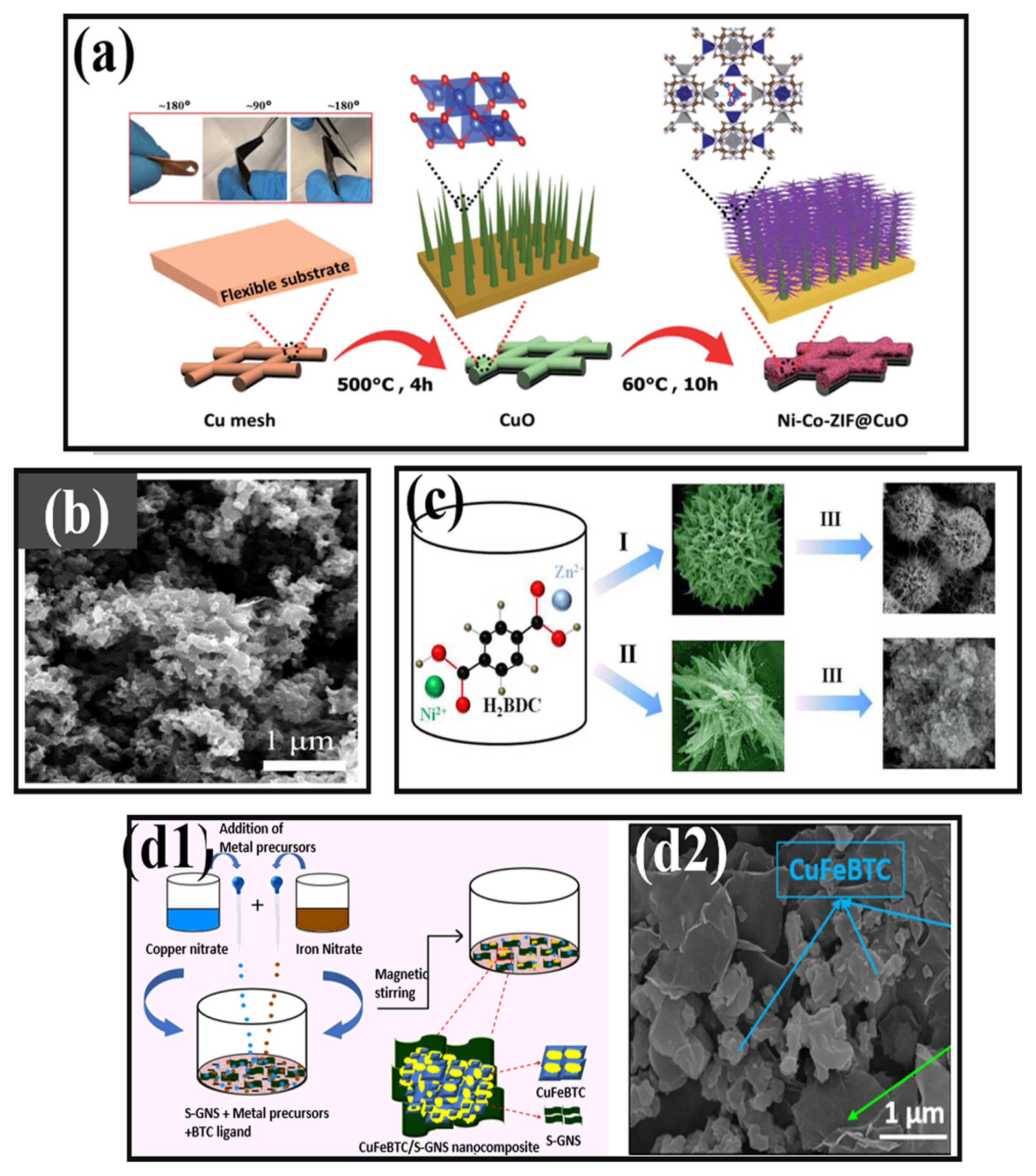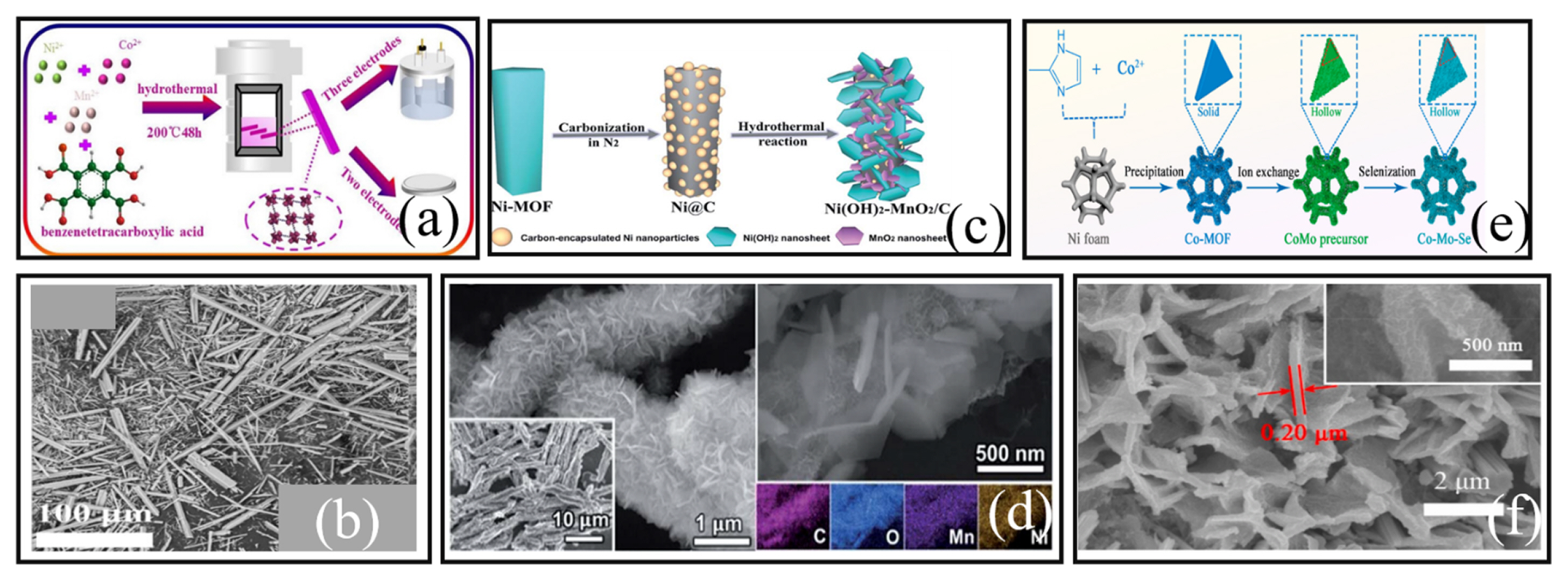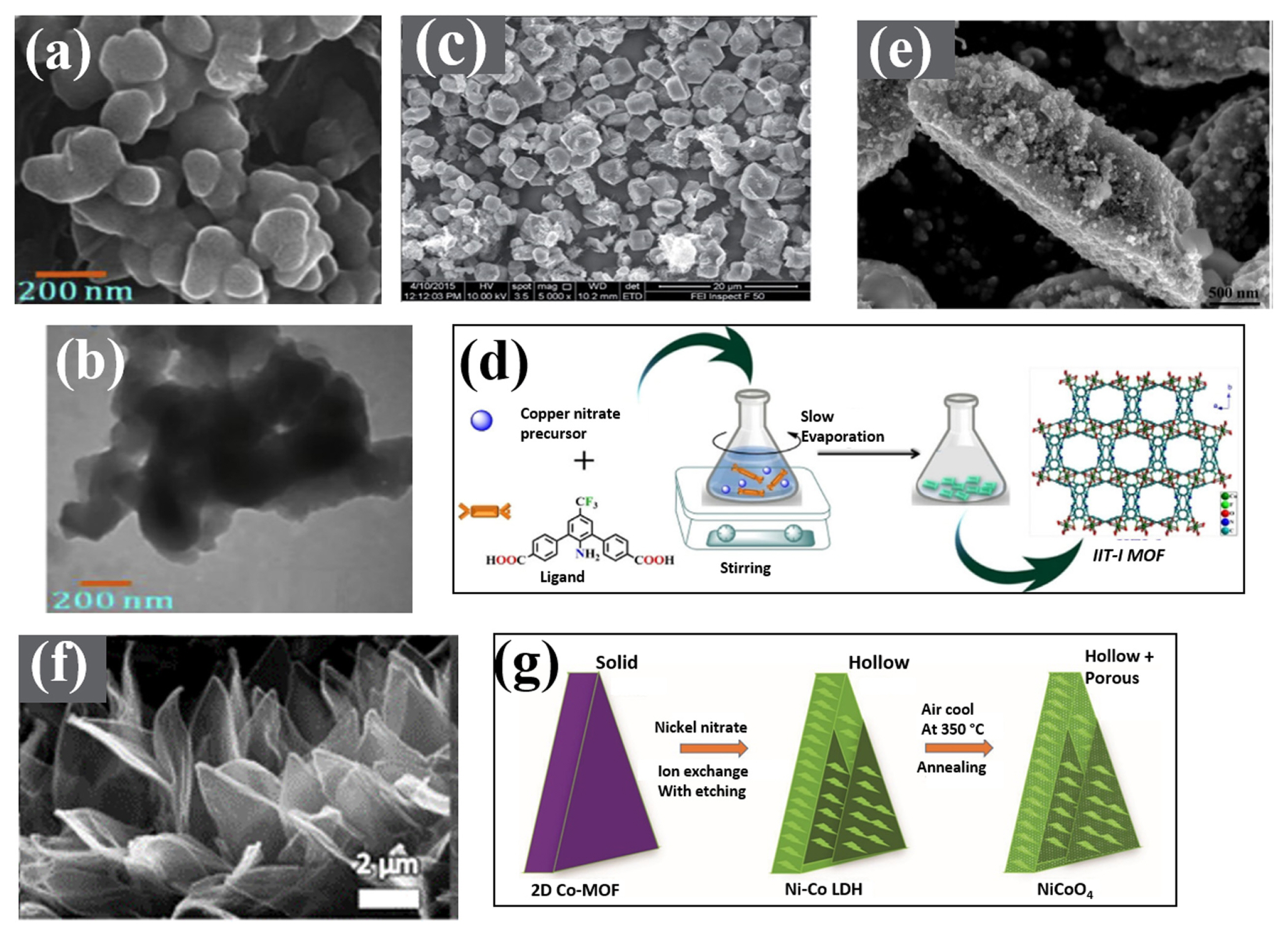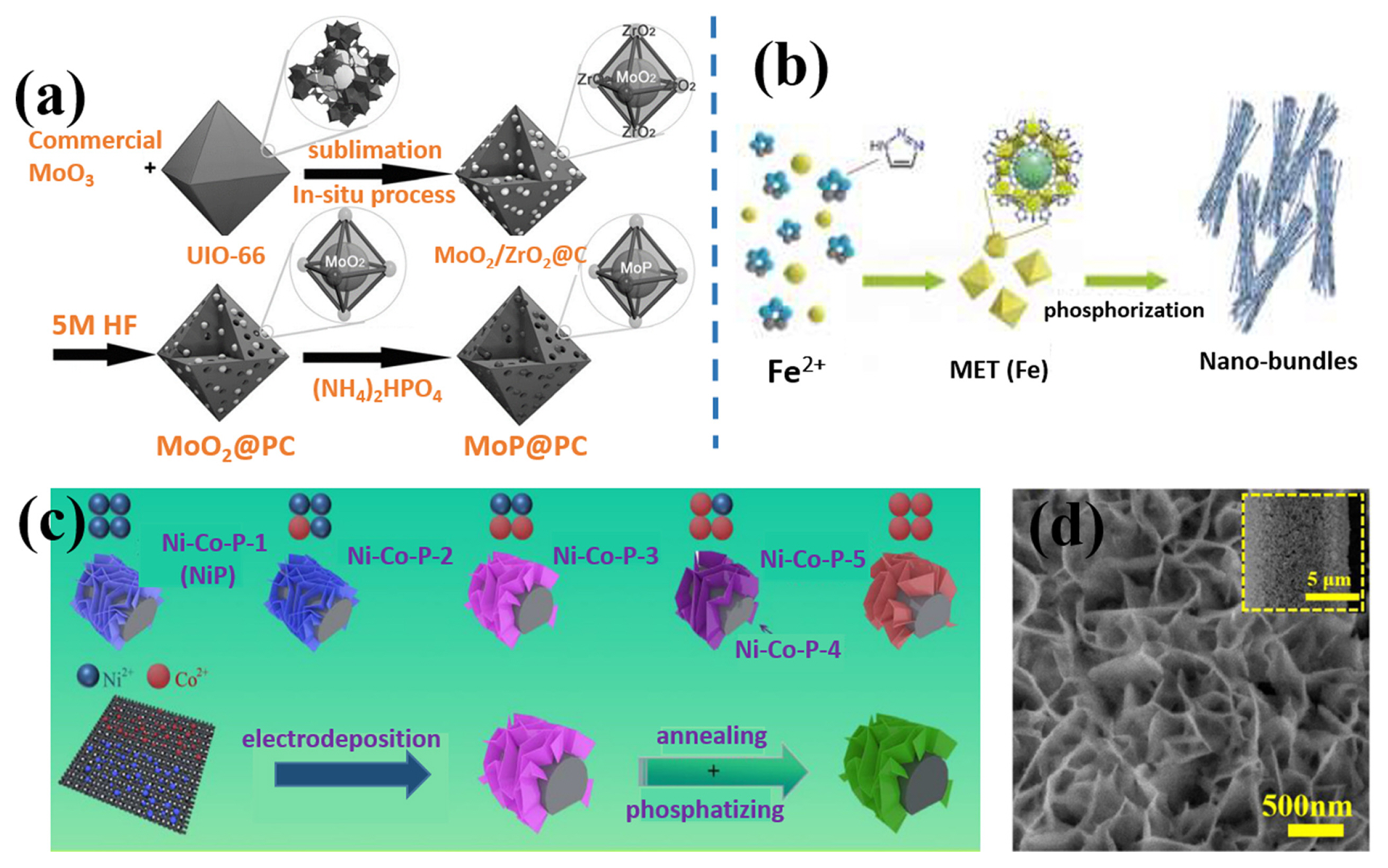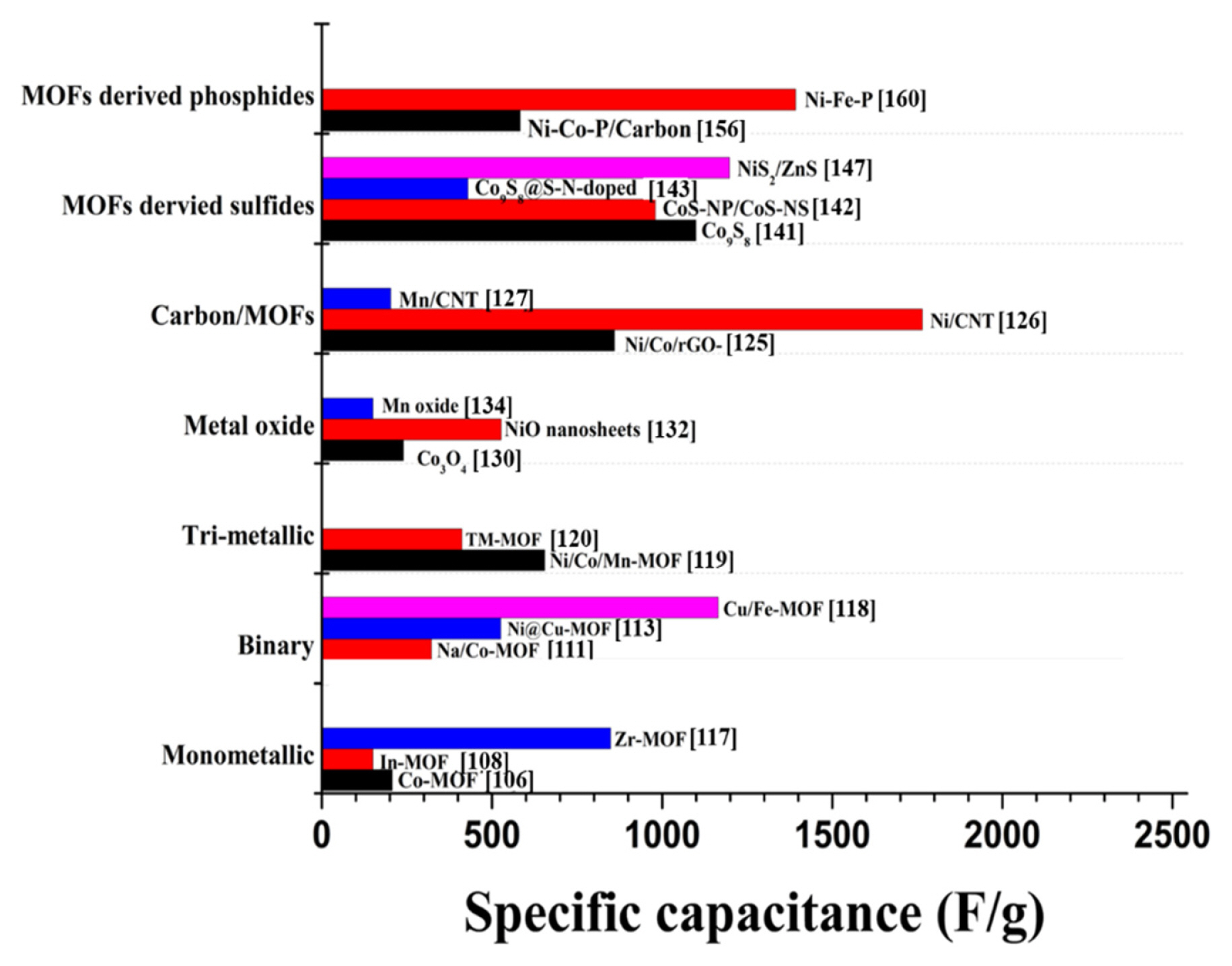[1] N. Abas, A. Kalair and N. Khan,
Futures,
2015,
69, 31–49.

[2] M. Höök and X. Tang,
Energy Policy,
2013,
52, 797–809.

[3] S. R. Chia, S. Nomanbhay, M. Y. Ong, A. H. B. Shamsuddin, K. W. Chew and P. L. Show,
Fuel,
2022,
314, 123137.

[4] M. A. A. M. Abdah, H. T. A. Awan, M. Mehar, M. N. Mustafa, R. Walvekar, M. W. Alam, M. Khalid, R. Umapathi and V. Chaudhary,
J. Energy Storage,
2023,
63, 106942.

[5] G. Zhang, Y. Ge, Z. Ye and M. Al-Bahrani,
J. Energy Storage,
2023,
57, 106160.

[6] M. M. Hasan and A. H. Chowdhury,
J. Energy Storage,
2023,
58, 106327.

[7] M. M. Rashidi, I. Mahariq, N. Murshid, S. Wongwises, O. Mahian and M. A. Nazari,
Alex. Eng. J.,
2022,
61(
12), 12977–12989.

[8] A. Chaudhuri, R. Datta, M. P. Kumar, J. P. Davim and S. Pramanik,
Materials,
2022,
15(
3), 1232.

[9] A. Rahman, O. Farrok and M. M. Haque,
Renew. Sustain. Energy Rev.,
2022,
161, 112279.

[10] A. K. Rai, N. H. A. Makishah, Z. Wen, G. Gupta, S. Pandit and R. Prasad,
Fermentation,
2022,
8(
4), 161.

[11] C. C. Claudio, M. T. B. Perazzini and H. Perazzini,
Renew. Energy,
2022,
181, 304–316.

[12] J. Twitchell, K. DeSomber and D. Bhatnagar,
J. Energy Storage,
2023,
60, 105787.

[13] C. M. S. Kumar, S. Singh, M. K. Gupta, Y. M. Nimdeo, R. Raushan, A. V. Deorankar, T. M. A. Kumar, P. K. Rout, C. S. Chanotiya, V. D. Pakhale and A. D. Nannaware,
Sustain. Energy Technol. Assess.,
2023,
55, 102905.

[14] A. Ari, A. K. Bohre, P. Chaturvedi, M. L. Kolhe and S. N. Singh, Techno-economic analysis of hybrid renewable energy systems—A review with case study. Planning of Hybrid Renewable Energy Systems, Electric Vehicles and Microgrid. Energy Systems in Electrical Engineering. Springer, Singapore,
2022. p.227–264.

[15] G. Willems, Unraveling Flashback Phenomena of Turbulent premixed Hydrogen-Natural Gas-Air Flames. Master Thesis, Delft University of Technology. 2022.
[16] A. K. Barik, S. Jaiswal and D. C. Das,
Int. J. Sustain. Energy,
2022,
41(
4), 308–322.

[17] E. K. Stigka, J. A. Paravantis and G. K. Mihalakakou,
Renew. Sustain. Energy Rev.,
2014,
32, 100–106.

[18] J. Geng, S. Gao, X. Sun, Z. Liu, F. Zhao and H. Hao,
Energy,
2022,
253, 124159.

[19] K. Mallon and F. Assadian,
Energies,
2022,
15(
2), 600.

[20] S. Koohi-Fayegh and M. A. Rosen,
J. Energy Storage,
2020,
27, 101047.

[21] I. E. Atawi, A. Q. Al-Shetwi, A. M. Magableh and O. H. Albalawi,
Batteries,
2022,
9(
1), 29.

[22] S. Prabhu, M. Maruthapandi, A. Durairaj, S. A. Kumar, J. H. T. Luong, R. Ramesh and A. Gedanken,
ACS Appl. Energy Mater.,
2023,
6(
3), 1321–1331.


[23] M. Horn, J. MacLeod, M. Liu, J. Webb and N. Motta,
Econ. Anal. Policy,
2019,
61, 93–103.

[24] J. Liu, J.-G. Zhang, Z. Yang, J. P. Lemmon, C. Imhoff, G. L. Graff, L. Li, J. Hu, C. Wang, J. Xiao, G. Xia, V. V. Viswanathan, S. Baskaran, V. Sprenkle, X. Li, Y. Shao and B. Schwenzer,
Adv. Funct. Mater.,
2013,
23(
8), 929–946.

[25] W. Cao, J. Zhang and H. Li,
Energy Storage Mater.,
2020,
26, 46–55.

[26] X. Wei, W. Xu, M. Vijayakumar, L. Cosimbescu, T. Liu, V. Sprenkle and W. Wang,
Adv. Mater.,
2014,
26(
45), 7649–7653.

[27] Y. Wu and C. Cao,
Sci. China Mater.,
2018,
61, 1517–1526.


[28] J. Ni, Y. Huang and L. Gao,
J. Power Sources,
2013,
223, 306–311.

[29] M. Gao, Z. Wnag, D. G. Lek and Q. Wang,
Nano Research Energy,
2023,
2, e9120045.

[30] Y. Huang, L. Quan, T. Liu, Q. Chen, D. Cai and H. Zhan,
Nanoscale,
2018,
10, 14171–14181.

[31] G. Xu, P. Nie, H. Dou, B. Ding, L. Li and X. Zhang,
Mater. Today,
2017,
20(
4), 191–209.

[32] Y. Zhao, Z. Song, X. Li, Q. Sun, N. Cheng, S. Lawes and X. Sun,
Energy Storage Mater.,
2016,
2, 35–62.

[33] F. Figueira and F. A. A. Paz,
C,
2021,
7(
2), 47.

[34] J. Zhou and B. Wang,
Chem. Soc. Rev.,
2017,
46, 6927–6945.

[35] J. Hu, X. Yuan, C. Wang, X. Shao, B. Yang, A. A. Razzaq, X. Zhao, Y. Lian, Z. Deng, M. Chen and Y. Peng, Small, 2020, 16(24), 2000755.
[36] M. F. Khan, M. A. Marwat, . Abdullah, S. S. Shah, M. R. A. Karim, M. A. Aziz, Z. U. Din, S. Ali and K. M. Adam, Sep. Purif. Technol., 2023, 310, 123101.
[37] L. Sun, C. H. Hendon, S. S. Park, Y. Tulchinsky, R. Wan, F. Wang, A. Walsh and M. Dincă,
Chem. Sci.,
2017,
8, 4450–4457.

[38] C. Li, L. Zhang, J. Chen, X. Li, J. Sun, J. Zhu, X. Wang and Y. Fu,
Nanoscale,
2021,
13, 485–509.

[39] H. Babaei, A. J. H. McGaughey and C. E. Wilmer,
Chem. Sci.,
2017,
8, 583–589.

[40] J. Ren, Y. Huang, H. Zhu, B. Zhang, H. Zhu, S. Shen, G. Tan, F. Wu, H. He, S. Lan, X. Xia and Q. Liu,
Carbon Energy,
2020,
2(
2), 176–202.


[41] K. O. Otun, S. Zong, D. Hildebrandt and X. Liu,
J. Phys. Chem. Solids,
2022,
167, 110779.

[42] B. Li, H.-M. Wen, W. Zhou and B. Chen,
J. Phys. Chem. Lett.,
2014,
5(
20), 3468–3479.

[43] A. F. Sahayaraj, H. J. Prabu, J. Maniraj, M. Kannan, M. Bharathi, P. Diwahar and J. Salamon,
J. Inorg. Organomet. Polym.,
2023,
33, 1757–1781.


[44] Y. Peng, J. Xu, J. Ma, Y. Bai, S. Cao, S. Zhang and H. Pang,
Adv. Colloid Inferface Sci.,
2022,
307, 102732.

[45] G. Xu, C. Zhu and G. Gao, Small, 2022, 18(44), 2203140.
[46] M. A. Marwat, B. Xie, M. Ashtar, Y. Zhu, P. Fan and H. Zhang,
Ceram. Int.,
2018,
44(
6), 6843–6850.

[47] B. Zhang, Y. Zheng, T. Ma, C. Yang, Y. Peng, Z. Zhou, M. Zhou, S. Li, Y. Wang and C. Cheng, Adv. Mater., 2021, 33(17), 2006042.
[48] A. C. McKinlay, R. E. Morris, P. Horcajada, G. Férey, R. Gref, P. Couvreur and C. Serre,
Angew. Chem. Int. Ed.,
2010,
49(
36), 6260–6266.

[49] S. Kumar, S. Jain, M. Nehra, N. Dilbaghi, G. Marrazza and K.-H. Kim,
Coord. Chem. Rev.,
2020,
420, 213407.

[50] T. Rasheed, M. Bilal, A. A. Hassan, F. Nabeel, R. N. Bharagava, L. F. R. Ferreira, H. N. Tran and H. M. N. Iqbal,
Environ. Res.,
2020,
185, 109436.

[51] D. Liu, W. Gu, L. Zhou, L. Wang, J. Zhang, Y. Liu and J. Lei,
Chem. Eng. J.,
2022,
427, 131503.

[52] I. Ihsanullah, Curr. Opin. Environ. Sci. Health, 2022, 100335.
[53] A. Elrasheedy, N. Nady, M. Bassyouni and A. El-Shazly,
Membranes,
2019,
9(
7), 88.

[54] L. Du, Biotechnol. J., 2021, 16(2), 1900424.
[55] A. Bieniek, A. P. Terzyk, M. Wiśniewski, K. Roszek, P. Kowalczyk, L. Sarkisov, S. Keskin and K. Kaneko,
Prog. Mater. Sci.,
2021,
117, 100743.

[56] H. Shu, T. Lai, J. Ren, X. Cui, X. Tian, Z. Yang, X. Xiao and Y. Wang,
Nanotechnology,
2022,
33, 135502.


[57] T. Yao, H. Wang, Y. Qin, J.-W. Shi and Y. Cheng,
Compos. B: Eng.,
2023,
253, 110557.

[58] M. I. da Silva, Í. R. Machado, H. E. Toma, K. Araki, L. Angnes and J. M. Gonçalves,
J. Mater. Chem. A,
2022,
10, 430–474.

[59] J.-K. Sun and Q. Xu,
Energy Environ. Sci.,
2014,
7, 2071–2100.

[60] S.-L. Li and Q. Xu,
Energy Environ. Sci.,
2013,
6, 1656–1683.

[61] W. K. Chee, H. N. Lim, Z. Zainal, N. M. Huang, I. Harrison and Y. Andou,
J. Phys. Chem. C,
2016,
120(
8), 4153–4172.

[62] Q. Ke and J. Wang,
J. Materiomics,
2016,
2(
1), 37–54.

[63] A. A. Kalam, S. Park, Y. Seo and J. Bae,
Bull. Korean Chem. Soc.,
2015,
36(
8), 2111–2115.

[64] E. V. Lobiak, L. G. Bulusheva, E. O. Fedorovskaya, Y. V. Shubin, P. E. Plyusnin, P. Lonchambon, B. V. Senkovskiy, Z. R. Ismagilov, E. Flahaut and A. V. Okotrub,
Beilstein J. Nanotechnol.,
2017,
8, 2669–2679.


[65] F. J. Claire, M. A. Solomos, J. Kim, G. Wang, M. A. Siegler, M. F. Crommie and T. J. Kempa, Nat. Commun., 2020, 11, 5524.
[66] J. Cao, Y. Li, L. Wang, Y. Qiao, J. Li, L. Zhu, S. Zhang, X. Yan and H. Xie,
J. Alloys Compd.,
2023,
936, 168262.

[67] L. Legenstein, S. Rodríguez-Hermida, V. Rubio-Giménez, T. Stassin, S. Hofer, M. P. Kainz, M. Fratschko, F. Carraro, P. Falcaro, R. Ameloot and R. Resel, Adv. Mater. Interfaces, 2023, 10(12), 2202461.
[68] Y. Ren and Y. Xu,
Chem. Commun.,
2023,
59, 6475–6494.

[69] Y. K. Park, S. B. Choi, H. J. Nam, D.-Y. Jung, H. C. Ahn, K. Choi, H. Furukawa and J. Kim,
Chem. Commun.,
2010,
46, 3086–3088.

[70] H. Hayashi and Y. Hakuta,
Materials,
2010,
3(
7), 3794–3817.

[71] H. Jiang, Q. Wang, H. Wang, Y. Chen and M. Zhang,
Catal. Commun.,
2016,
80, 24–27.

[72] Y.-R. Lee, J. Kim and W.-S. Ahn,
Korean J. Chem. Eng.,
2013,
30, 1667–1680.


[73] M. Díaz-García and M. Sánchez-Sánchez, Microporous Mesoporous Mater., 2014, 190, 248–254.
[74] D.-P. Qin, K.-R. Huang, G.-M. Huang and L.-S. Cui,
J. Mol. Struct.,
2023,
1280, 135000.

[75] A. K. Hosseini, Y. Pourshirzad and A. Tadjarodi, J. Solid State Chem., 2023, 317, 123676.
[76] W. Zhang, Z. Shahnavaz, X. Yan, X. Huang, S. Wu, H. Chen, J. Pan, T. Li and J. Wang,
Inorg. Chem.,
2022,
61(
38), 15287–15301.


[77] B. D. de Greñu, S. Muñoz-Pina, R. de los Reyes, M. Benitez, J. E. Haskouri, P. Amorós and J. V. Ros-Lis, ChemSusChem., 2023, 16(12), e202300123.
[78] Y.-T. Hsieh and W.-R. Liu,
Ceram. Int.,
2023,
49(
19), 32164–32171.

[79] L. Hu, L. Chen, Y. Fang, A. Wang, C. Chen and Z. Yan,
Microporous Mesoporous Mater.,
2018,
268, 207–215.

[80] T. Zhao, S.-H. Li, L. Shen, Y. Wang and X.-Y. Yang,
Inorg. Chem. Commun.,
2018,
96, 47–51.

[81] W. Li, Z. Li, F. Yang, X. Fang and B. Tang,
ACS Appl. Mater. Interfaces,
2017,
9(
40), 35030–35039.

[82] A. Laybourn, J. Katrib, R. S. Ferrari-John, C. G. Morris, S. Yang, O. Udoudo, T. L. Easun, C. Dodds, N. R. Champness, S. W. Kingman and M. Schröder,
J. Mater. Chem. A,
2017,
5, 7333–7338.

[83] N. A. Khan, I. J. Kang, H. Y. Seok and S. H. Jhung,
Chem. Eng. J.,
2011,
166(
3), 1152–1157.

[84] P. T. Phan, J. Hong, N. Tran and T. H. Le,
Nanomaterials,
2023,
13(
2), 352.

[85] J. Wang, M. Rao, C. Ye, Y. Qiu, W. Su, S. Zheng, J. Fan, S. Cai and W.-G. Zhang,
RSC Adv.,
2020,
10, 4621–4629.

[86] Y. Ning, X. Lou, C. Li, X. Hu and B. Hu,
Chem. Eur. J.,
2017,
23(
63), 15984–15990.


[87] C. Li, X. Hu, W. Tong, W. Yan, X. Lou, M. Shen and B. Hu,
ACS Appl. Mater. Interfaces,
2017,
9(
35), 29829–29838.

[88] H. Kennaz, A. Harat, O. Guellati, D. Y. Momodu, F. Barzegar, J. K. Dangbenon, N. Manyala and M. Guerioune,
J. Solid State Electrochem.,
2018,
22, 835–847.


[89] J.-J. Li, M.-C. Liu, L.-B. Kong, D. Wang, Y.-M. Hu, W. Han and L. Kang,
RSC Adv.,
2015,
5, 41721–41728.

[90] N. Liu, X. Liu and J. Pan,
J. Colloid Interface Sci.,
2022,
606, 1364–1373.

[91] S. Opelt, S. Türk, E. Dietzsch, A. Henschel, S. Kaskel and E. Klemm,
Catal. Commun.,
2008,
9(
6), 1286–1290.

[92] X. Chen, X. Chen, E. Yu, S. Cai, H. Jia, J. Chen and P. Liang,
Chem. Eng. J.,
2018,
344, 469–479.

[93] R. Rajak, M. Saraf, P. Kumar, K. Natarajan and S. M. Mobin,
Inorg. Chem.,
2021,
60(
22), 16986–16995.

[94] W. Xie, Y. Wang, J. Zhou, M. Zhang, J. Yu, C. Zhu and J. Xu,
Appl. Surface Sci.,
2020,
534, 147584.

[95] T. K. Ghosh and G. R. Rao,
Dalton Trans.,
2023,
52, 5943–5955.

[96] R. Wu, D. P. Wang, X. Rui, B. Liu, K. Zhou, A. W. K. Law, Q. Yan, J. Wei and Z. Chen,
Adv. Mater.,
2015,
27(
19), 3038–3044.


[97] B. Y. Guan and X. W. Lou, Small Methods, 2017, 1(7), 1700158.
[98] B. Y. Guan, L. Yu and X. W. Lou,
Energy Environ. Sci.,
2016,
9, 3092–3096.

[99] Y. Wang, Z. Shi, Y. Huang, Y. Ma, C. Wang, M. Chen and Y. Chen,
J. Phys. Chem. C,
2009,
113(
30), 13103–13107.

[100] Y. Zhu, S. Murali, M. D. Stoller, K. J. Ganesh, W. Cai, P. J. Ferreira, A. Pirkle, R. M. Wallace, K. A. Cychosz, M. Thommes, D. Su, E. A. Stach and R. S. Ruoff,
Science,
2011,
332, 1537–1541.

[101] M. Kaempgen, C. K. Chan, J. Ma, Y. Cui and G. Gruner,
Nano Lett.,
2009,
9(
5), 1872–1876.

[102] Y. Korenblit, M. Rose, E. Kockrick, L. Borchardt, A. Kvit, S. Kaskel and G. Yushin,
Acs Nano,
2010,
4(
3), 1337–1344.

[103] H. Nishihara, H. Itoi, T. Kogure, P.-X. Hou, H. Touhara, F. Okino and T. Kyotani,
Chem. Eur. J.,
2009,
15(
21), 5355–5363.

[104] T. P. Mofokeng, A. K. Ipadeola, Z. N. Tetana and K. I. Ozoemena,
ACS Omega,
2020,
5(
32), 20461–20472.


[105] Y. Li, Y. Xu, Y. Liu and H. Pang, Small, 2019, 15(36), 1902463.
[106] D. Y. Lee, S. J. Yoon, N. K. Shrestha, S.-H. Lee, H. Ahn and S.-H. Han,
Mciroporous Mesoporous Mater.,
2011,
153, 163–165.

[107] D. Y. Lee, D. V. Shinde, E.-K. Kim, W. Lee, I.-W. Oh, N. K. Shrestha, J. K. Lee and S.-H. Han,
Microporous Mesoporous Mater.,
2013,
171, 53–57.

[108] M. Du, M. Chen, X.-G. Yang, J. Wen, X. Wang, S.-M. Fang and C.-S. Liu,
J. Mater. Chem. A,
2014,
2, 9828–9834.

[109] Y. Pan, D. Gao, Y. Dang, P. Xu, D. Han, C. Liu, Y. Wei and Y. Yang,
Inorg. Chem. Front.,
2022,
9, 5982–5993.

[110] R. Díaz, M. G. Orcajo, J. A. Botas, G. Calleja and J. Palma, Mater. Lett., 2012, 68, 126–128.
[111] R. Rajak, M. Saraf and S. M. Mobin,
Inorg. Chem.,
2020,
59(
3), 1642–1652.

[112] I. Hussain, S. Iqbal, T. Hussain, Y. Chen, M. Ahmad, M. S. Javed, A. AlFantazi and K. Zhang,
J. Mater. Chem. A,
2021,
9, 17790–17800.

[113] Y. Wang, S. Nie, Y. Liu, W. Yan, S. Lin, G. Cheng, H. Yang and J. Luo,
Polymers,
2019,
11(
5), 821.

[114] D. Fu, Z. Chen, C. Yu, X. Song and W. Zhong,
Prog. Nat. Sci.: Mater. Int.,
2019,
29(
5), 495–503.

[115] P. Yang, X. Song, C. Jia and H.-S. Chen,
J. Ind. Eng. Chem.,
2018,
62, 250–257.

[116] G.-C. Li, P.-F. Liu, R. Liu, M. Liu, K. Tao, S.-R. Zhu, M.-K. Wu, F.-Y. Yi and L. Han,
Dalton Trans.,
2016,
45, 13311–13316.

[117] W. Gao, D. Chen, H. Quan, R. Zou, W. Wang, X. Luo and L. Guo,
ACS Sustainable Chem. Eng.,
2017,
5(
5), 4144–4153.

[118] A. S. Rajpurohit, N. S. Punde and A. K. Srivastava,
J. Colloid Interface Sci.,
2019,
553, 328–340.

[119] X.-G. Han, P.-F. Wang, Y.-H. Zhang, H.-Y. Liu, J.-J. Tang, G. Yang and F.-N. Shi,
Inorganica Chim. Acta.,
2022,
536, 120916.

[120] M. Aghazadeh and H. F. Rad,
Ionics,
2022,
28, 2389–2396.


[121] E. R. Ezeigwe, L. Dong, J. Wang, L. Wang, W. Yan and J. Zhang, J. Colloid Interface Sci., 2020, 574, 140–151.
[122] X. Xu, W. Shi, W. Liu, S. Ye, R. Yin, L. Zhang, L. Xu, M. Chen, M. Zhong and X. Cao,
J. Mater. Chem. A,
2018,
6, 24086–24091.

[123] C. Miao, C. Zhou, H.-E. Wang, K. Zhu, K. Ye, Q. Wang, J. Yan, D. Cao, N. Li and G. Wang,
J. Power Sources,
2021,
490, 229532.

[124] A. A. Meshram and S. M. Sontakke,
Mater. Today: Proc.,
2021,
46, 6201–6206.

[125] M. S. Rahmanifar, H. Hesari, A. Noori, M. Y. Masoomi, A. Morsali and M. F. Mousavi,
Electrochim. Acta.,
2018,
275, 76–86.

[126] P. Wen, P. Gong, J. Sun, J. Wang and S. Yang,
J. Mater. Chem. A,
2015,
3, 13874–13883.

[127] Y. Zhang, B. Lin, Y. Sun, X. Zhang, H. Yang and J. Wang,
RSC Adv.,
2015,
5, 58100–58106.

[128] S. N. Ansari, M. Saraf, A. K. Gupta and S. M. Mobin,
Chem. Asian J.,
2019,
14(
20), 3566–3571.


[129] K.-Y. Zou, Y.-C. Liu, Y.-F. Jiang, C.-Y. Yu, M.-Li. Yue and Z.-X. Li,
Inorg. Chem.,
2017,
56(
11), 6184–6196.

[130] L. Wang, Y. Han, X. Feng, J. Zhou, P. Qi and B. Wang,
Coord. Chem. Rev.,
2016,
307, 361–381.

[131] G.-C. Li, X.-N. Hua, P.-F. Liu, Y.-X. Xie and L. Han,
Mater. Chem. Phys.,
2015,
168, 127–131.

[132] Z. Sun, L. Hu, W. Ran, Y. Lu and D. Jia,
New J. Chem.,
2016,
40, 1100–1103.

[133] S. Maiti, A. Pramanik and S. Mahanty,
CrystEngComm,
2016,
18, 450–461.

[134] L.-D. Chen, Y.-Q. Zheng and H.-L. Zhu,
J. Mater. Sci.,
2018,
53, 1346–1355.


[135] S. Chen, M. Xue, Y. Li, Y. Pan, L. Zhu, D. Zhang, Q. Fang and S. Qiu,
Inorg. Chem. Front.,
2015,
2, 177–183.

[136] C. Guan, X. Liu, W. Ren, X. Li, C. Cheng and J. Wang, Adv. Energy Mater., 2017, 7(12), 1602391.
[137] W. Guo, Y. Xiang, Y. Xing, S. Li, J. Li and H. Tang,
Int. J. Electrochem. Sci.,
2016,
11, 9216–9227.

[138] H. Liu, H. Guo, L. Yue, N. Wu, Q. Li, W. Yao, R. Xue, M. Wang and W. Yang,
ChemElectroChem.,
2019,
6(
14), 3764–3773.


[139] D. Tian, S. Chen, W. Zhu, C. Wang and X. Lu,
Mater. Chem. Front.,
2019,
3, 1653–1660.

[140] F. Cao, M. Zhao, Y. Yu, B. Chen, Y. Huang, J. Yang, X. Cao, Q. Lu, X. Zhang, Z. Zhang, C. Tan and H. Zhang,
J. Am. Chem. Soc.,
2016,
138(
22), 6924–6927.

[141] X. Han, K. Tao, D. Wang and L. Han,
Nanoscale,
2018,
10, 2735–2741.

[142] H. Hu, B. Y. Guan and X. W. D. Lou,
Chem.,
2016,
1(
1), 102–113.

[143] S. Liu, M. Tong, G. Liu, X. Zhang, Z. Wang, G. Wang, W. Cai, H. Zhang and H. Zhao,
Inorg. Chem. Front.,
2017,
4, 491–498.

[144] J. S. Chen, C. Guan, Y. Gui and D. J. Blackwood,
ACS Appl. Mater. Interfaces,
2017,
9(
1), 496–504.

[145] C. Qu, L. Zhang, W. Meng, Z. Liang, B. Zhu, D. Dang, S. Dai, B. Zhao, H. Tabassum, S. Gao, H. Zhang, W. Guo, R. Zhao, X. Huang, M. Liu and R. Zou,
J. Mater. Chem. A,
2018,
6, 4003–4012.

[146] K. Tao, X. Han, Q. Cheng, Y. Yang, Z. Yang, Q. Ma and L. Han,
Chem. Eur. J.,
2018,
24(
48), 12584–12591.


[147] G.-C. Li, M. Liu, M.-K. Wu, P.-F. Liu, Z. Zhou, S.-R. Zhu, R. Liu and L. Han,
RSC Adv.,
2016,
6, 103517–103522.

[148] Y. Zhang, L. Li, H. Su, W. Huang and X. Dong,
J. Mater. Chem. A,
2015,
3, 43–59.

[149] X. Li, R. Ding, W. Shi, Q. Xu, L. Wang, H. Jiang, Z. Yang and E. Liu,
Mater. Lett.,
2017,
187, 144–147.

[150] X. Wang, H.-M. Kim, Y. Xiao and Y.-K. Sun,
J. Mater. Chem. A,
2016,
4, 14915–14931.

[151] Y. Lu, J. Liu, X. Liu, S. Huang, T. Wang, X. Wang, C. Gu, J. Tu and S. X. Mao,
CrystEngComm,
2013,
15, 7071–7079.

[152] J. Yang, F. Zhang, X. Wang, D. He, G. Wu, Q. Yang, X. Hong, Y. Wu and Y. Li,
Angew. Chem. Int. Ed.,
2016,
55(
41), 12854–12858.


[153] R. Zhao, S. Gao, Y. Wu, Z. Liang, H. Zhang, W. Xia, S. Li, Y. Zhao and R. Zou,
Chem. Eur. J.,
2020,
26(
18), 4001–4006.


[154] T. Tian, L. Ai and J. Jiang,
RSC Adv.,
2015,
5, 10290–10295.

[155] C. Shuai, Z. M, X. Niu, P. Zhao, Q. Dng, Y. Chen, N. Liu and R. Guo,
J. Alloys Compd.,
2020,
847, 156514.

[156] G. Qu, P. Sun, G. Xiang, J. Yin, Q. Wei, C. Wang and X. Xu,
Appl. Mater. Today,
2020,
20, 100713.

[157] Q. Zhou, Y. Gong and K. Tao,
Electrochim. Acta.,
2019,
320, 134582.

[158] S. Gayathri, P. Arunkumar, D. Saha and J. H. Han,
J. Colloid Interface Sci.,
2021,
588, 557–570.

[159] C. Li, J. Wang, Y. Yan, P. Huo and X. Wang,
Chem. Eng. J.,
2022,
446, 137108.

[160] K. Chhetri, T. Kim, D. Acharya, A. Muthurasu, B. Dahal, R. M. Bhattarai, P. C. Lohani, I. Pathak, S. Ji, T. H. Ko and H. Y. Kim,
Chem. Eng. J.,
2022,
450, 138363.

[161] M. Y. Masoomi, K. C. Stylianou, A. Morsali, P. Retailleau and D. Maspoch,
Cryst. Growth Des.,
2014,
14(
5), 2092–2096.

[162] Y. Sun and H.-C. Zhou,
Sci. Technol. Adv. Mater.,
2015,
16(
5), 054202.

[163] J. Klinowski, F. A. A. Paz, P. Silva and J. Rocha,
Dalton Trans.,
2011,
40, 321–330.

[164] P. Horcajada, T. Chalati, C. Serre, B. Gillet, C. Sebrie and R. Gref,
Nature Mater.,
2010,
9, 172–178.


[165] A. Asghar, N. Iqbal and T. Noor,
Polyhedron,
2020,
181, 114463.

[166] P. Silva, S. M. F. Vilela, J. P. C. Tomé and F. A. A. Paz,
Chem. Soc. Rev.,
2015,
44, 6774–6803.

[167] N. Stock and S. Biswas,
Chem. Rev.,
2012,
112(
2), 933–969.

[168] I. Stassen, M. Styles, G. Grenci, H. V. Gorp, W. Vanderlinden, S. D. Feyter, P. Falcaro, D. D. Vos, P. Vereecken and R. Ameloot,
Nature Mater.,
2016,
15, 304–310.


[169] N. Abid, A. M. Khan, S. Shujait, K. Chaudhary, M. Ikram, M. Imran, J. Haider, M. Khan, Q. Kahn and M. Maqbool,
Adv. Colloid Interface Sci.,
2022,
300, 102597.

[170] K. Parveen, V. Banse and L. Ledwani, AIP Conference Proceedings, 2016, 1724(1), 020048.




